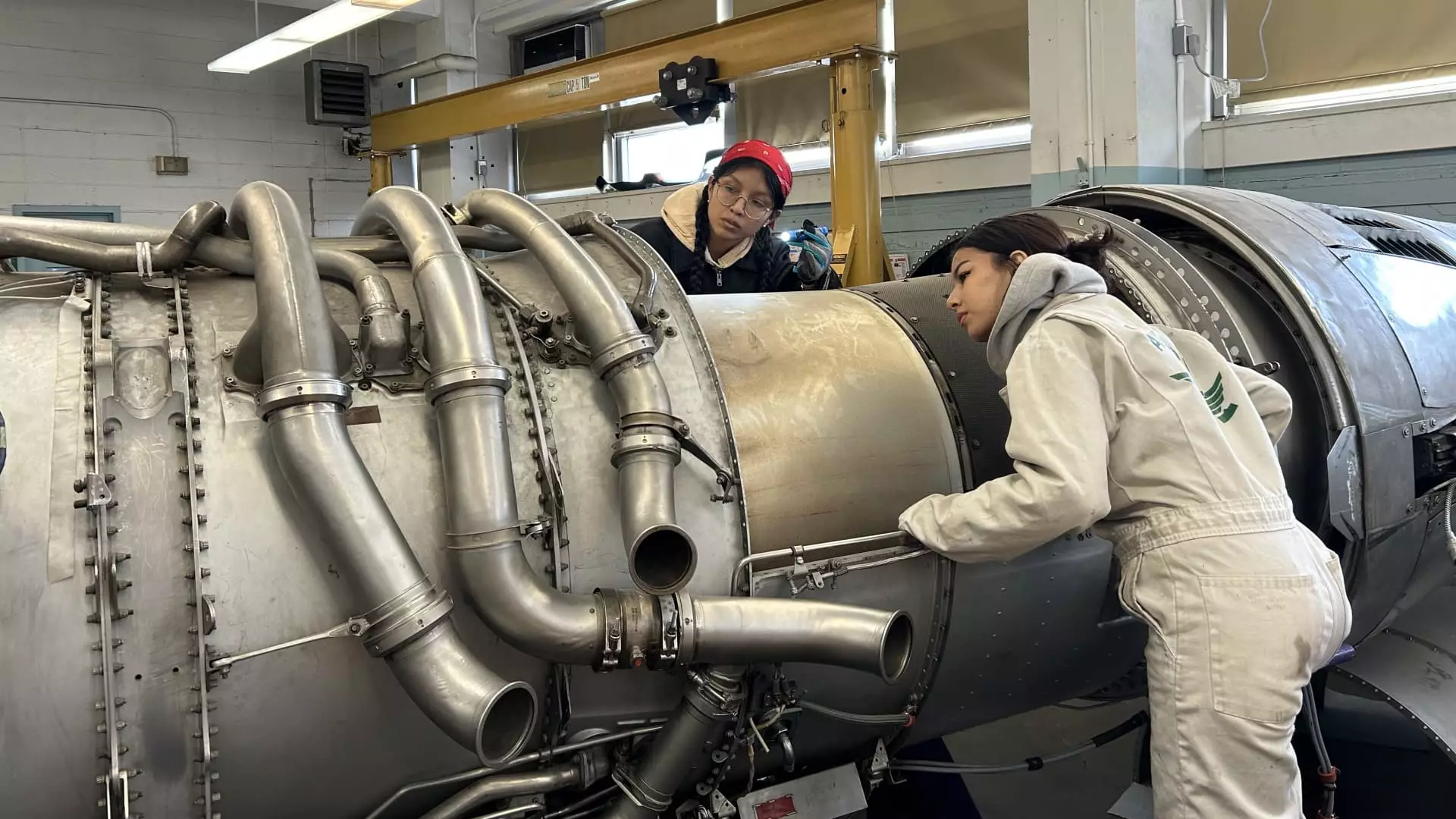The aviation industry in the United States stands on the brink of a workforce crisis that is both alarming and disheartening. With projections indicating a shortfall of approximately 25,000 aircraft technicians by 2028, the urgency to address this impending shortage cannot be overstated. The average age of a certified aircraft mechanic hovering around 54, with 40% of this skilled workforce crossing the threshold of 60 years, serves as a stark reminder that a generational gap is fast approaching in this essential sector. These figures, drawn from a harrowing 2024 report by the Aviation Technician Education Council and Oliver Wyman, underscore the gravity of a situation that essentially marks the aviation industry’s slow march toward catastrophe.
Sadly, the emphasis is placed on trying to revitalize an industry that has already lost a significant talent pool, particularly after the calamity of the COVID-19 pandemic. The decision by several companies to offer buyouts and cut jobs during this turbulent phase has only accelerated the skills drain. David Seymour, Chief Operating Officer at American Airlines, poignantly captures the unsettling reality when he states that the hired workforce from the 1980s to the early 1990s is now reaching retirement age. This indicates a reckless disregard for future preparedness that can no longer be ignored.
Desperate Times Demand Swift Action
In response to this looming crisis, major airlines and airplane manufacturing entities are scrambling to attract younger individuals to fill the gap. However, this endeavor is met with challenges that seem insurmountable. The decision-makers in the aviation sector have realized that despite apparent high-paying opportunities—average salaries for aircraft technicians soaring to $79,140 versus an average national income of $49,500—job satisfaction and workforce mobility remain significant barriers. Many potential recruits are unaware of the lucrative and rewarding careers available in aviation, relegating this industry to an image problem.
Sarah MacLeod, the executive director of the Aeronautical Repair Station Association, aptly points out that current wages may not suffice to fill the expanding void. While pay increases have coincided with the rising demand for technicians, many workers feel undercompensated. This sentiment only adds to the industry’s struggles and reinforces the idea that simply raising wages may not be the panacea the sector desperately needs.
The Debate Over Manufacturing Sentiments
Amid this workforce debacle, discussions have begun circulating regarding the broader implications on American manufacturing as a whole. Manufacturing constitutes around 9% of U.S. employment, and as Harvard’s Gordon Hanson correctly notes, this particular sector has garnered a disproportionate amount of attention relative to other fields. The unintended consequence of this focus has left many potential workers in other labor markets feeling underappreciated. Regional barriers further exacerbate this issue, with workers often unwilling or unable to relocate for manufacturing jobs that may not exist elsewhere.
This exacerbation creates a negative feedback loop that significantly hedges against robust economic growth. Certainly, there’s a prevailing obsession with manufacturing as a cornerstone of national economic prowess, yet the reality is that many jobs do not align with the attractive compensation packages promised. In essence, the imbalance between demand and fulfilling labor needs primarily due to geographical constraints presents an obstacle that will require not just immediate solutions but also long-term strategic planning.
Younger Generation: The Key to Rejuvenation?
Despite these challenges, a burgeoning sense of hope exists among them. Aviation High School’s promising initiatives to get high school students involved in aviation early on represent a pivotal shift in tackling the industry’s workforce shortages. Students are increasingly making decisions to pursue FAA licenses over traditional four-year degrees, intrigued by both the training programs and hands-on experiences offered.
This transitional trend highlights a potential cultural shift where practical skills are recognized and valued, providing a silver lining to this otherwise concerning situation. The increasing engagement of educational institutions with aviation industries implies a recognition that careers in aerospace and technical fields are less about the “blue-collar mentality” and more about technological advancements and innovation.
The Future: A Double-Edged Sword
However, one can’t help but wonder whether the current strategies are enough to make a lasting impact. While GE and other manufacturing giants ramp up their hiring initiatives, the reliance on only the young generation entering the workforce may overlook the depth of investment needed to cultivate a loyal and skilled workforce. The dynamism required for a high-tech manufacturing environment necessitates not only new recruits but seasoned professionals willing to mentor and train them.
As the crisis continues to develop, the aviation sector’s ability to attract and retain talent will be critical in determining whether it can soar to new heights or continue to plummet into chaos. The recent numbers are indeed eye-opening, and as we navigate this workforce dilemma, we must recognize that the future is not merely about filling positions but also about investing in a new generation willing to carry the industry forward—one aircraft at a time.

